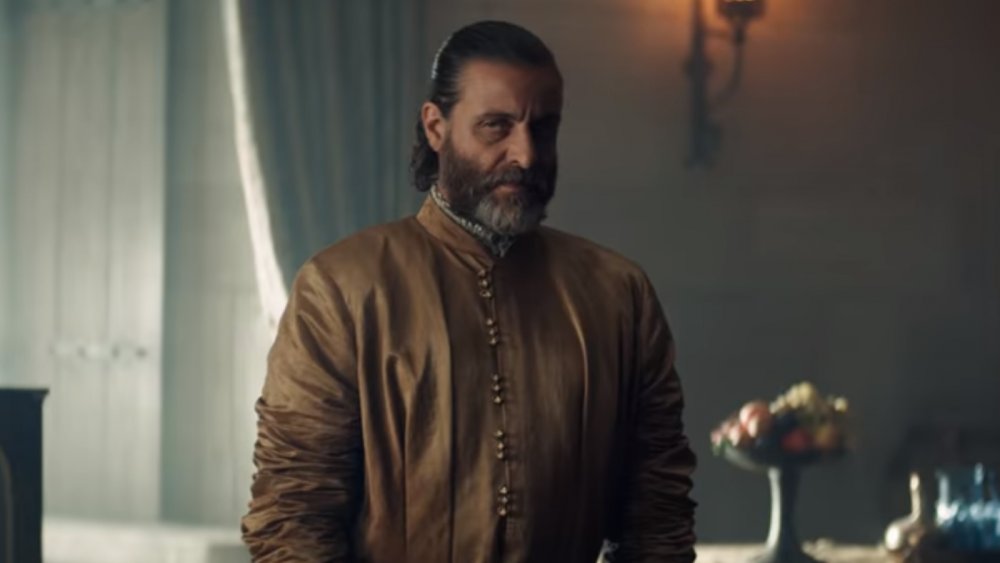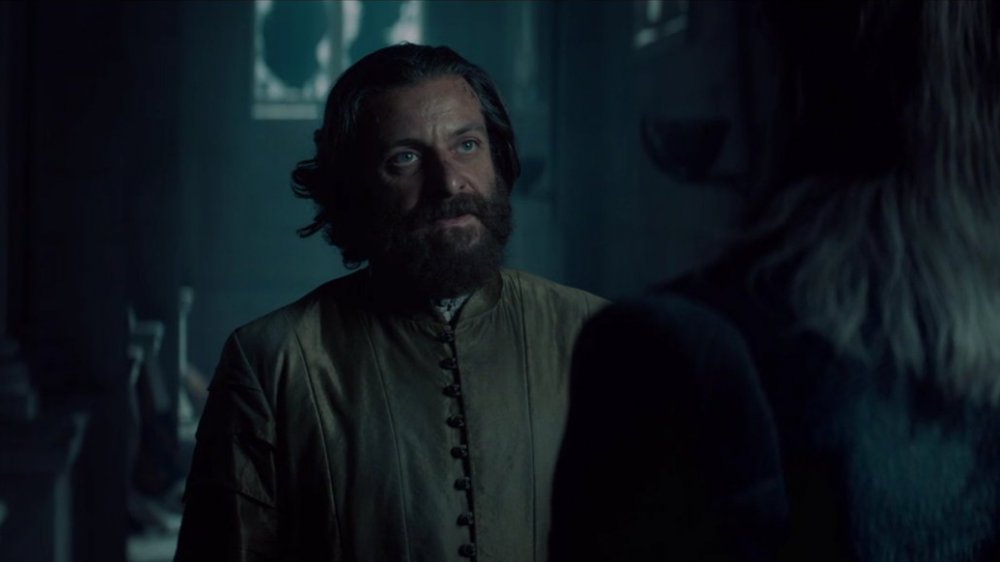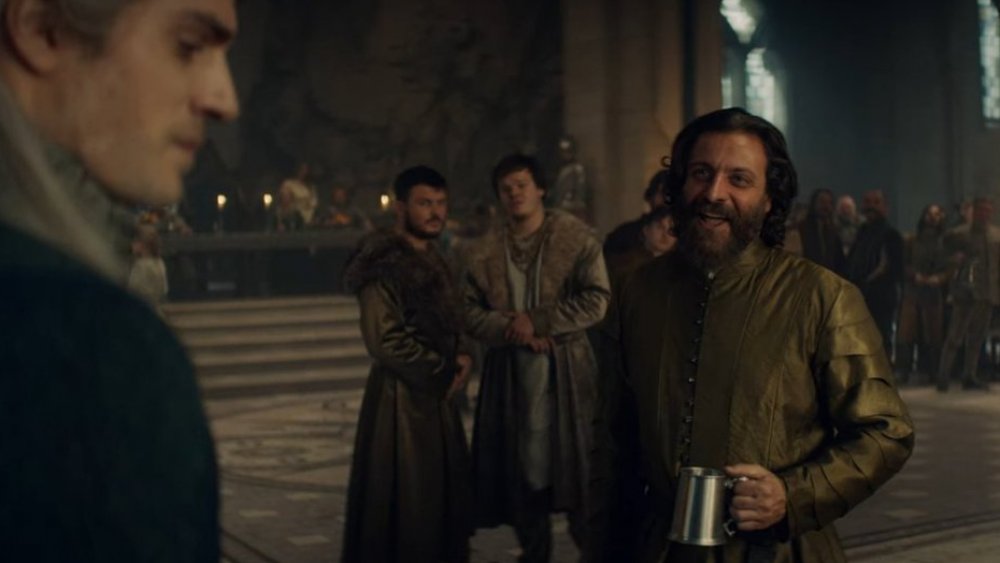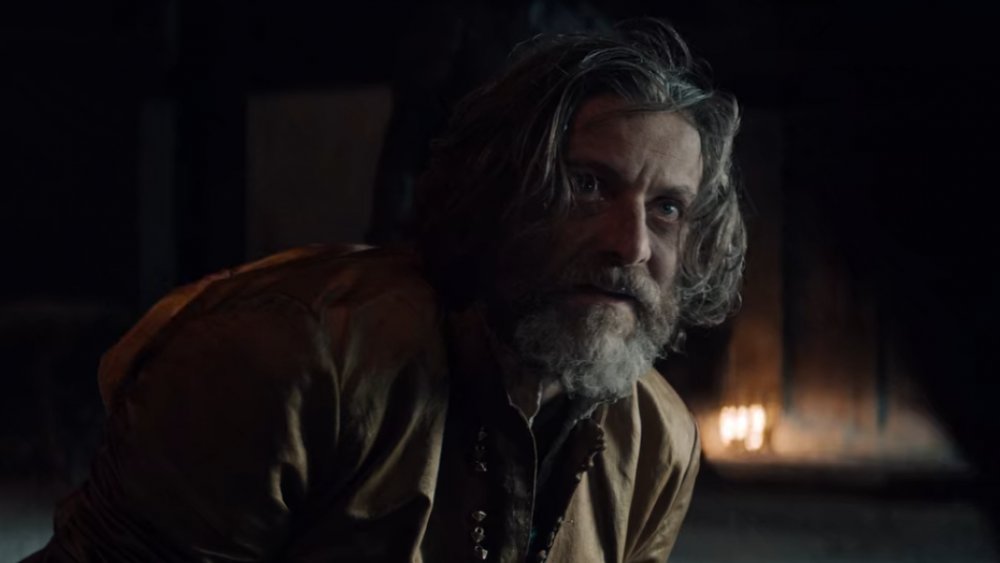The Untold Truth Of Mousesack From The Witcher
Mousesack: a character with probably the most misleading name ever created in fantasy fiction. You assume he's going to be some filthy street brigand assisting the hero in his Call to Action, but no — he's a pretty normal-looking middle-aged dude in nicely embroidered robes befitting his status as a magical consultant to royalty. Beyond his arcane talents, a little bit of sassiness and plenty of wisdom have gotten him a long way in his long life, and he counts Geralt of Rivia as a friend despite their disagreements about the nature of fate and their responsibilities to the world.
Mousesack's time on Netflix's The Witcher, though short, nonetheless stands out for Adam Levy's excellent performance in the role. He is a secondary character important enough to appear in almost every piece of Witcher media ever made. Canonically, he helped raise Princess Ciri and protect her up until Cintra fell during Nilfgaard's conquest. He's got his own collection of deeper-cut fun facts to learn, if the Netflix series was your initiation into this fantasy universe's lore. Here are the most interesting facts about the oddly named druid of the wild Northern Kingdoms.
Where did Mousesack come from?
In the Netflix series, we meet Mousesack in Cintra, and due to the non-linear progression of the story, we don't get a lot of easily accessible background info about him. For one, he's not even from Cintra, nor is he placed there as an appointment through an external organization like Yennefer was by Tissaia. Mousesack is from Skellige, a collection of islands in the seas north of Cintra. They're remote, populated by expert seafarers (it wouldn't be out of hand to describe them as vaguely inspired by Vikings), and comprise a sovereign kingdom of their own despite their stalwart support for Cintra. He is the ranking member of Skellige's Circle of Druids, a school of magic separate from The Brotherhood in which Yennefer and Tissaia were trained. Druids are generally regarded as the tree huggers of the Northern Kingdoms, amusingly enough. They're real big into nature and preserving it as part of their practices.
Why should he come to Cintra, then? Because he's helping out his old buddy Eist Tuirseach, who — before marrying Queen Calanthe of Cintra — was commander of Skellige's military forces. As we learn from Calanthe herself, Tuirseach fell in love with her after her other, more useless husband died. He became nominal King of Cintra, and Mousesack stayed on in his role as advisor. They've known each other most of Tuirseach's life at least, since magic-users in Witcher-verse are particularly long-lived.
A man of many names, not just the silly one
Mousesack has seen his share of names in the various media and necessarily non-Polish translations that have come along over the years. English speakers likely find the name a little odd to their ears. Part of that is because it's an antiquated English-slang version of the original Polish word that is his proper name: myszowór, or phascogale, a marsupial from Australia that looks like a mouse and has the pouch for carrying young. As far as canon is concerned, that is his only known given name. Even the non-canonical comic series that establishes Geralt and Mousesack as childhood friends refers to him by that name.
When the video games were localized for English language, however, his name was changed upon his previously mentioned escape from the destruction of Cintra and return to Skellige. In that version, he is known as Ermion, though the name change seems to purely have been an English-localization choice, and does not appear in the Polish version. We have to admit, it does make him sound a bit more noble than "Mousesack."
Netflx made changes to Mousesack's story
Spoilers for The Witcher season 1 beyond
As we see in the series, Mousesack suffers an ill fate in season 1. He's ruthlessly murdered so a shapeshifter can take his identity and capture Ciri for the Nilfgaardian empire. This sticky end for the character is one of the biggest canonical departures the Netflix series makes from the original book canon.
The story of Ciri being lost in Brokilon Forest originally appeared in a short story anthology under the title "The Sword of Destiny." In this version of events, rather than fleeing the sacking of Cintra, Ciri runs away from a meeting with her politically arranged betrothed and hides in Brokilon, unaware of its danger. Mousesack — wholly himself and not a doppelganger — appears at the end of the story to help Geralt and Ciri escape the forest and return to Cintra, whereupon he beseeches Geralt to take Ciri under his wing full time to fulfill his responsibility to The Law of Surprise. Geralt refuses and departs without Ciri. He doesn't see her again until after Calanthe dies and Cintra falls. In Netflix's reimagining of these events, Geralt and Mousesack's argument about his responsibility to The Law of Surprise is covered within Cintra itself, and Geralt does not previously meet Ciri before the first season's final episode.
It is not clear if Mousesack survives the fall of Cintra in the books, but in the Projekt Red video game adaptation continuity, he does, and he appears in Witcher 3: Wild Hunt after having returned to Skellige to ascend to hierophant status within a Druid Circle there. We have every reason to assume that Mousesack is dead in the Netflix series, but magic and fate do have their wily ways of skirting death, so you never know.



